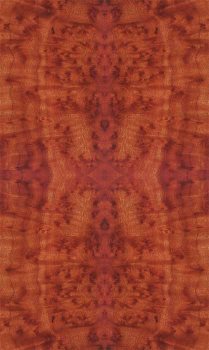Camphor (Cinnamomum, camphora)
Trade Names: Camphor
Origin: China, Vietnam, Japan
Range: In China between the 10th and 30th northern parallel in the evergreen subtropical deciduous forests. Wide-spread in Taiwan. Also found in Vietnam, Korea and Japan. Normally growing in altitudes of 500 to 600 m. Growing up to 30 m tall and sometimes reach diameters of 3 m max. Burl form develops relatively seldom.
Uses: Camphor Burl veneers are used for decorative interior architectural woodwork, special building projects and for exclusive furniture. With the exception of Asia, this wood is relatively unknown in the world, however, this species can match other burls in beauty and supply possibilities. Favored in Japan on account of its resistance to fungus and insects as wood for boats and shipbuilding. From all parts of this plant, camphor oil and other etheric substances are extracted to be used as basic substances for perfumes. Also used for medical purposes. The leaves of the Camphor tree are eaten by the Camphor Silk Caterpillar whose cocoons are produced to natural silk for fishing-lines and surgical thread.
Properties: Colors range from yellow/orange to red/brown often being multicolored. Very intensive scent which does not subside when the wood is produced to veneers.
Machining: Easy to work with all tools.
Seasoning: Difficult and slow. Needs to be done with care.
